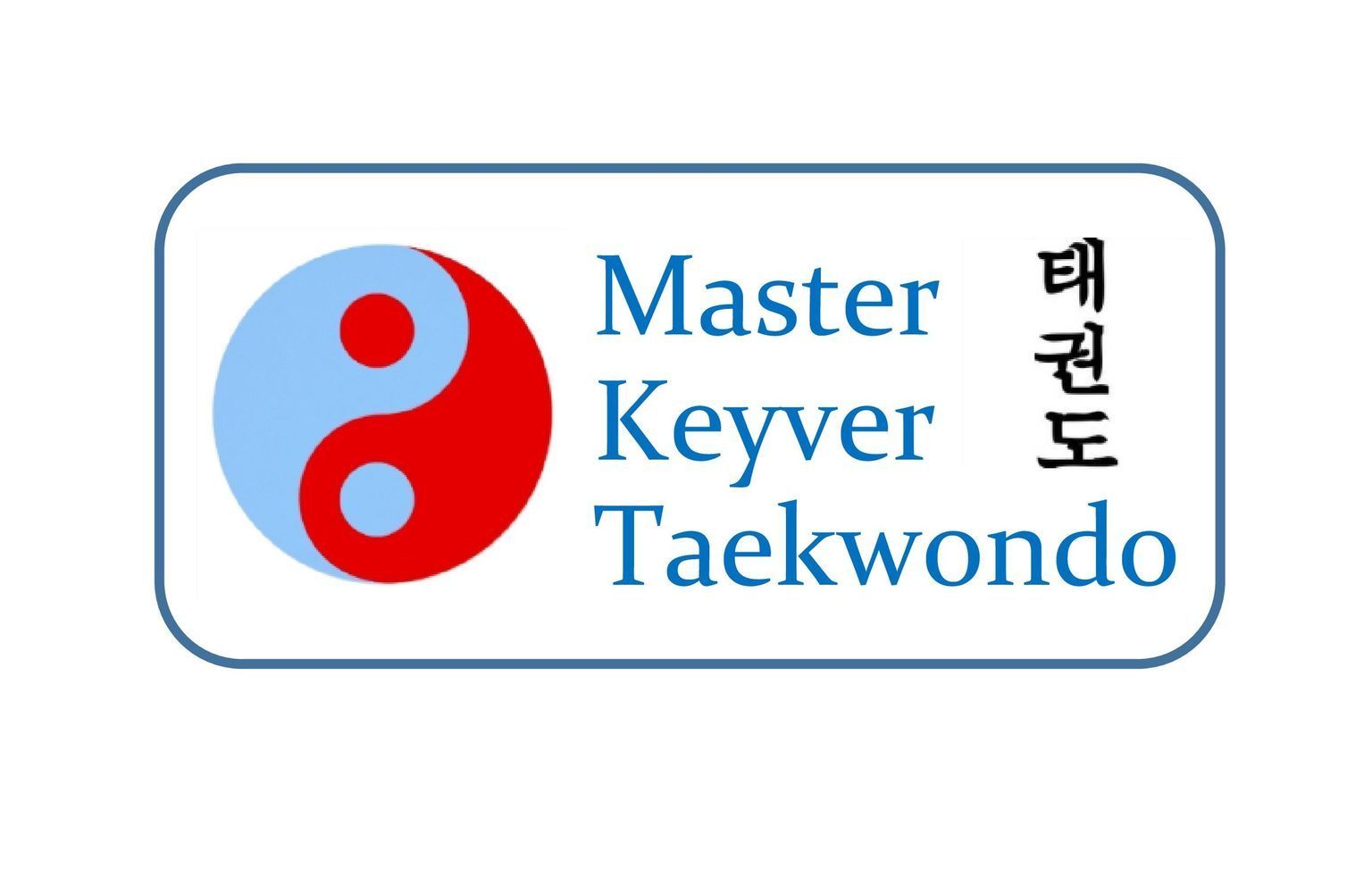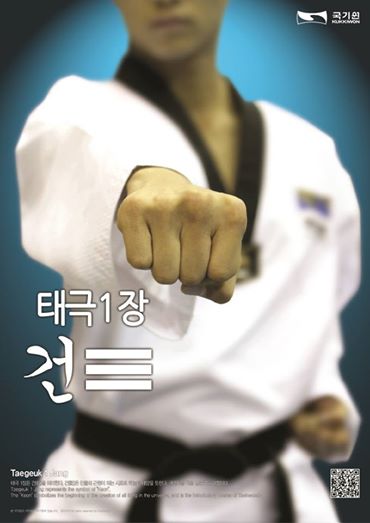
Taegeuk 1 Jang symbolizes the 'Sky' of the 8 trigrams and corresponds with the letter 'Keon'. The 'Keon' means 'Yang' in the relative effects between 'Yin and Yang'. The 'Keon has expressed the force which notifies the start of all creation. Therefore 'Keon' corresponds with the head of the human body and this means correct understanding and adoption of skills through thetraining of 'Poomsae'.
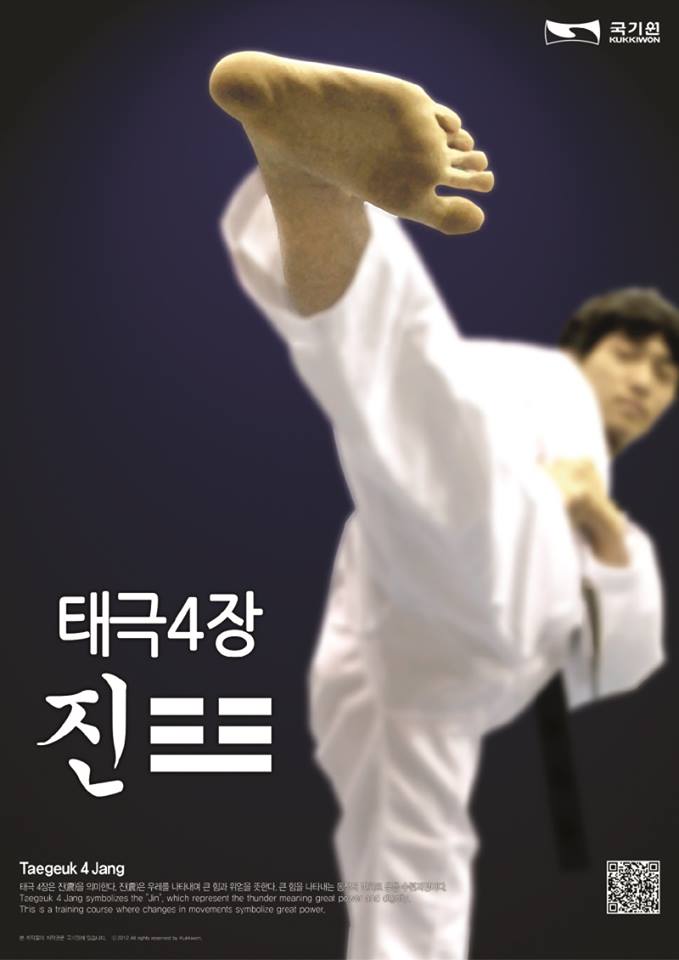
Taegeuk 4 Jang corresponds with the 'Jin' of the 8 trigrams. 'Jin' expresses the sudden 'thunder and lightning' in the clouds. In the eastern world, people considered 'Jinas' a dragon. In relation with the human body, 'Jin' means the mobility of two feet which are able to move quickly and present powerful 'Chagi'. You suddenly change direction using both your feet and attack the opponent. It is meaningful to maintain the distance with the partner and make attacks as if you were a dragon.
Taegeuk 7 Jang corresponds with 'Kan' of the 8 trigrams. 'Kan' represents the sturdy mountain range that is the connection of mountains. From the human body it means the backbone and bending and stretching exercises of the joints in the body and backbones in the whole aspects. As a mountain includes the high stack of soil as well as the water flow between the rocks, the body includes muscles, joints, blood vessels and nerve systems. Thus it is important to practice using body joints and muscles through the effective bending and stretching exercises for making the strong force.
A poomsae is a systematic, prearranged sequence of martial art techniques.
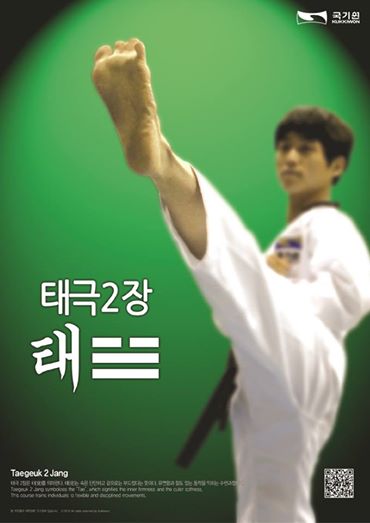
Taegeuk 2 Jang symbolizes the 'Tae' of the Taegeuk. 'Tae' originally means a silent pond. So if we apply this to the functions of the human body, it means that the control of respiration and furthermore it could be considered as the control of emotions. For these reasons, you must stabilize the energy in the body centering the lower abdomen. This is because even if you have learned the skills, if you cannot control your respiration and emotions properly, it is hard to attack and defend.
Taegeuk 5 Jang corresponds with the 'Son' of the 8 trigrams. 'Son' indicates the wind and is calm in usual conditions, but turns into a big typhoon sometimes. It corresponds with the pelvis and hip joints of the human body. It means to maintain a stabilized and strong posture while practicing. The muscles around the pelvis and the hip joint must be relaxed. Especially, this part of the body supports the spine and it helps to support all postures with elasticity. It is also the basis of turning force and the base force for the movement. So it means to practice several skills in various postures in order to perform the force of the body in many ways just as a typhoon's unpredictable development.
Taegeuk 8 Jang corresponds with 'Kon' of the 8 trigrams. 'Kon' indicates the land which has the energy of 'Yin' and it is also the base of all things on which they take root for their lives. As for the human body 'Kon' indicates the abdomen which protects the internal organs. As all forces of the human body originates from the abdomen 'Keon' in Taegeuk 1 Jang means the energy that initiates all things, 'Kon means the basis of life of all things in which they grow and bear fruit. Therefore in this procedure, practice for strengthening of the force of the abdomen and attacking in the air while both feet are off the ground with the entire body is included. The entire 7 stage course is finalized through the organic connective movements of the upper limb and lower limb.
Poomsae is the style of conduct which expresses directly or indirectly mental and physical refinement as well as the principles of offense and defense resulting from cultivation of Taekwondo spirit and techniques.
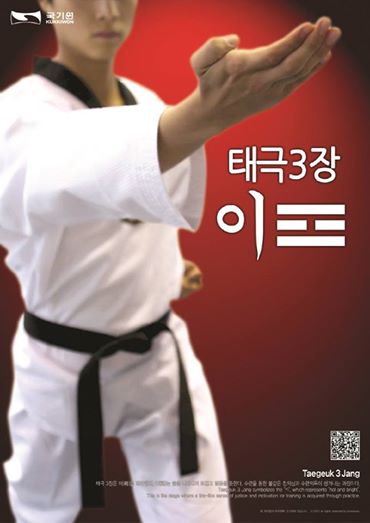
Taegeuk 3 Jang symbolizes the 'Yi' of the 8 trigrams. ''Yi' means the 'bright and hot energy' like the sun. Therefore, this corresponds with the heart in the human body and means the procedure of cultivating bravery. If we take a look at the features of fire, it starts with small embers and expands rapidly and burns everything up. It means the uncontrolled force of 'fire and light' scattering in all directions cannot be helpful for the practice of 'Poomsae'. So you have to customize the force and skills which correspond with the 'fire and light' and you have to boldly connect defense and attacking when making actions during the 'Poomsae'.
Taegeuk 6 Jang corresponds with 'Kam' of the 8 trigrams. 'Kam' represents the continuous flow of water. From the human body it means the ears. The ear should not only be used to hear sounds but also to feel strength and weakness of the surroundings.Therefore in this procedure, the practice of 'Poomsae' should be like having the feeling of counter attacking the partner by letting the force of the opponent flow by, as if flowing water passes over obstacles. Water flows consecutively regardless of the width or the existence of obstacles in the way and the techniques of 'Poomsae' should be just like this. But as water can fall as in water falls, it does not mean simply connecting external skills, but the radiation and collection of the force as a whole.
